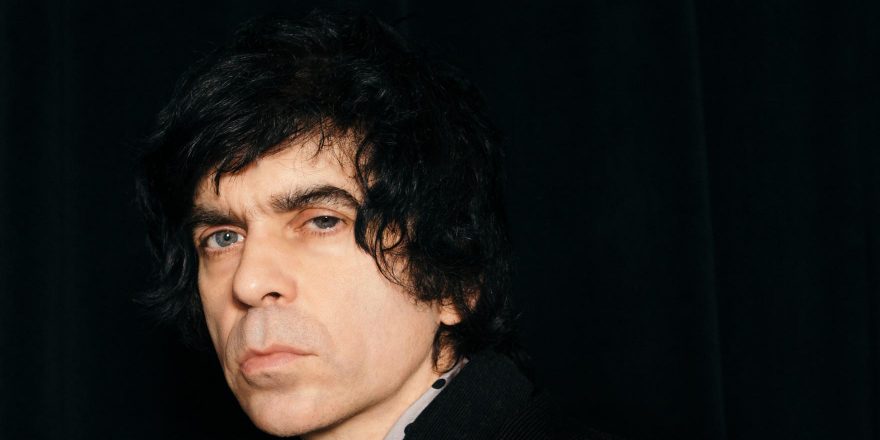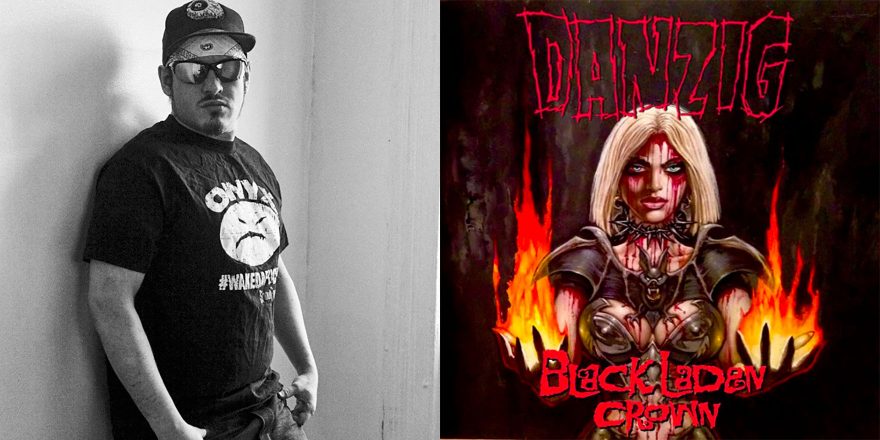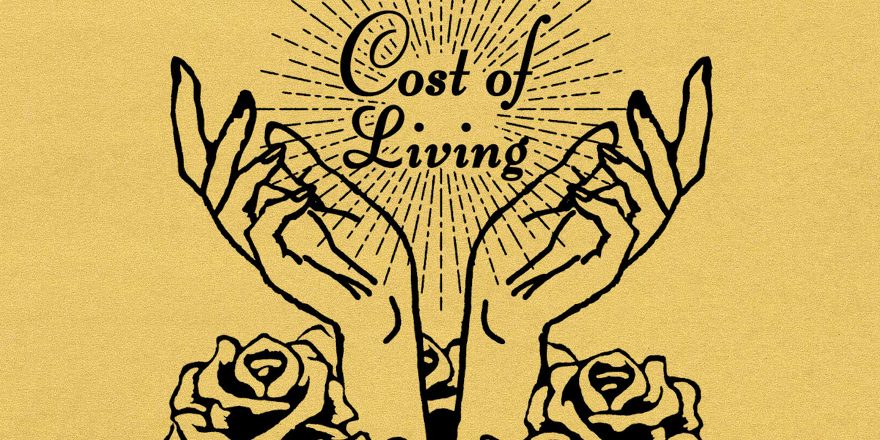For Americans in the nuclear age, the midlife crisis, or “M.L.C.,” is a predictable and perhaps inevitable event. The M.L.C., which can occur more than once in a person’s lifetime, usually strikes sometime between grade school and death, but it can also affect the very young and even the deceased (ghosts are often afflicted with a near-identical mania, though, for them, the term would be “P.L.C.,” or “post-life crisis”).
A M.L.C. is usually triggered by an event which leads the mid-lifer to confront their mortality and rage against their cosmic insignificance—inciting incidents may include the death of a parent, loss of a cell phone, or hearing one’s child or spouse making love in the basement. Once in the throes of a crisis, a mid-lifer’s symptoms include sudden, selfish disregard for social mores, responsibilities, and decorum, manifested in uncharacteristic behaviors which the mid-lifer would previously have thought vulgar, silly, or, as the British might say, naff. Purchasing a convertible, divorcing suddenly, taking up a drug habit, moving to the tropics, playing squash, trying one’s hand at oil painting, joining a motorcycle gang, getting the band back together, going to the gym, affecting the mannerisms of a television mafiosa, and, of course, shacking up with a young lover are all clichéd exhibitions of the mid-life emergency event, though any abrupt disavowal of one’s life path can be a sign that a “crisis” is occurring.
The midlife crisis is a favorite device for Hollywood plots, representing, as it does, a violent disjuncture. 8½, Thelma & Louise, Husbands and Wives, Office Space, and Office Space’s self-serious remake, American Beauty, are a few examples of M.L.C. in cinema. In these films, Hollywood proposes the crisis as a heroic gesture: a revolutionary tantrum which offers hope and comfort to the unfulfilled millions who are secretly planning their own nihilist implosion. Running free from the cage one has constructed—burning down one’s own barn in a self-immolating Dionysian liberation—is the collective fever dream of outwardly Apollonian Americans longing for release from the strict mandates of work, fun, and family under capitalism.
Sometimes entire institutions and social movements can also suffer from the same confused disjuncture which afflicts individuals embarking on the existential autumns of their mortal journeys. Rock ’n’ roll, for example, can be described as a midlife crisis… of the United States of America.
It’s no coincidence that rock ’n’ roll as we know it rose to prominence at the end of the Korean War. The year was 1953, and the USA was feeling existential; manic; frustrated. Until then, things had been going swimmingly; the US had emerged from World War II with a Charles Atlas physique, a winning grin, and a peerless global image as selfless savior. War pumped up the economy after a dismal “Great Depression,” and the US’s victory over the Third Reich’s unequivocal evil provided a free pass for fulfilling its formerly forbidden imperial ambitions. Who could argue with American militarism, when it had apparently liberated the world?
Indeed, the USA could sprawl its legs across the globe, and there was little its newly weakened former competitors could do. Great Britain was reeling after the war, its cities “blitzed” and its colonial possessions in limbo. The French were scarred by the ignominy of their occupation and collaboration with Germany, and their once-firm grip on Africa and Indochina had become tenuous. The Soviets, having done the lion’s share of fighting Nazism, had suffered grievously, resulting in 20 million corpses and most of their cities razed. China was embroiled in civil war. So: The USA was on top. With a monopoly on nukes and the moral authority provided by its democracy, it was the wunderkind of nations. Everything seemed on track for the USA’s eternal dominance of the globe… until it met the Korean chimera.
When North Korean communists attempted the unification of their divided country in 1950, the USA attempted to assert paternal authority with a military intervention. What was supposed to be a quick admonishment of a pesky non-conformist became a bloody stalemate. The USA found itself mired in the mountains against Maoists, mosquitoes, and MiG aircraft and had to settle for, instead of victory, armistice. In its inability to win, the USA recognized that its golden glory could and would crumble, just like that of Carthage, Alexandria, and Rome.
This precipitated an existential freakout for the land of the free and home of the brave. It was time to let loose, shirk responsibility, smoke some grass, and inhale a benzedrine. It was time to have some fun. Chuck Berry started playing live in 1953. Alan Freed’s “rock ’n’ roll” radio show went on the air in New York City the following year, just as Elvis Presley made his first recordings. A deviant, anti-corporate tendency had long shadowed America’s public projection of conformity, decency, and ambition, manifesting itself in “folkies,” “beats,” and bikers, but this was different. Rock ’n’ roll was a visceral rejection of a system that had mandated nukes, napalm, and the nightmare in Korea, propagated by masses of greasy, pimply, bopping teens—a spasmodic, hic-cupping, reverb-drenched manifestation of the loss of faith in the Protestant ethic, imperialist project, and the corporatist state. Street gangs, surfers, ho dads, and beatniks abounded, hanging out in newly proliferated “coffee shops.” The movement was a nation’s midlife crisis, personified.
Rock ’n’ roll reveled in its “delinquent” outsider role, so when it quickly replaced Dean Martin and Andy Miller as the music of the establishment, it was consumed with shame, embarrassed by its hypocrisy, and confused about its identity. Instead of being the soundtrack to ongoing revolution and the compass of new morality, as it had seemed to promise, when it first blasted from the jukebox at the espresso bar, it was morphing into something po-faced, bitter, and backwards-looking. After the Beatles’ unprecedented success launched a corporate takeover of the music, rock ’n’ roll assumed different permutations to subvert its suburban assimilation: folk-rock, psychedelia, heavy metal, glam-rock, musical theater, etc. But when Martin Scorsese created The Last Waltz, a biopic about “the Band,” the writing was on the wall: Rock ’n’ roll was collapsing inward, like the US Army at the 38th Parallel of the Korean peninsula. In the face of Scorcese’s most dull cinematic document, which would put any self-respecting rocker to sleep, the medium had to renew itself.
Punk was rock’s restless M.L.C. explosion, akin to an aging bank executive dumping his loyal wife, running off to Acapulco, and dabbling in lithography. “Sid Vicious” and his Sex Pistols were a boy’s/girl’s night out, revving up the Eddie Cochran records again and reminding everyone of the threat of the black jacket. As it took the rock ’n’ roll world by storm in the late 1970s, punk enjoyed moral authority and cultural cachet, and was seen as the barometer of what was authentic, right, and relevant. Punk—or “the new music”—was, for disgruntled readers of CREEM Magazine, hailed as a long-overdue curative to rock’s lame Laurel Canyon lethargy.
Punk declared a new democratization. Its adherents recalled rock’s youth as a hotbed of independent labels run by enthusiasts and recreated this feature of its childhood. Seizing the means of rock ’n’ roll production in a revolutionary gesture of decentralization was a sure signifier of punk as M.L.C. event. To defy corporate co-option, the punks’ “midlife” rejection was to burrow into an exclusive underworld of violent perversity, a là its miscreant doo-wop forebears. Participants were challenged as to their commitment, authenticity, relative disadvantage, and whether they deserved to wear the special uniform. Reductionism, purity, and submission to aesthetic tenets were strictly enforced. Punk was a rigorous lifestyle, and it took its toll on the fighters who upheld its values against the square world of corruption and false values. Members lived in squats, sniffed glue, read Bakunin, and affected social ostracization via horrible-to-hear music and soiled clothing. It was a doomed last hurrah of fun, flash, menace, and blood.
Eventually, punk would have its own M.L.C. event. The year predicted by Orwell’s 1984 (which the sci-fi–minded punks were obsessed with) came and went, USSR premier Gorbachev began unravelling the Soviet experiment, and Reagan and Thatcher won re-election. The context of militarism, austerity, and social conservative reaction which had created punk seemed, instead of apocalyptic, just dreary. What had been frightening and fascistic became normal fare. The hosts of spiky, studded, leather losers were sick of the speed, nihilism, and urgency which were supposed to address the M.A.D., or “mutually assured destruction,” of the Cold War confrontation. Punk’s midlife crisis was precipitated by a sense of the futility of its struggle and its demise at the hands of a music industry which had co-opted its symbols and navigated around its challenge in the adulation of stars like Billy Idol, Madonna, and Wham!, who adorned themselves with punk “clobber,” but got to have nice things, too.
As American hardcore bands (Circle Jerks, Faith, the Dicks) dissipated into artsy groups (Gone, Meat Puppets, Butthole Surfers), UK bands, infected by “crisis,” rejected punk rock’s cartoonish self-destruction and inverted elitism while attempting to sustain a commitment to independence and snobbishness. They came up with “indie rock.” “Indie” was an outgrowth of punk’s exhaustion with itself, and of the changing context where punk rockers were no longer the shepherds of moral rectitude and coolness. Indie was what happened to punk, which, when faced with its irrelevance, freaked out, began to reassess its life choices, indulged its Byrds obsession, and bought an old sports car. Bands like the Blue Aeroplanes, Ride, and the Wedding Present typified punk’s introverted, jangly, sweatered successor. Indie was boring and bloodless, but intentionally so, like an AA convert proudly presenting their expensive spatula to dinner guests, who are invited to marvel at how far their host has come from the gutter.
As the deregulation of credit under Bush and Clinton created a new hyper-consumer society, commodity fetishism and connoisseurship became the central pursuit of life itself for the middle classes—and the indie rocker’s most pressing concerns. It was a great time to collect cool bric-a-brac from a bygone era and nurse a bowl hairdo. Just as the punker had made perfect sense against an apocalyptic backdrop of Thatcher and Reagan, the indie rocker was a pig in slop during the ’90s neoliberal credit explosion. The indie rocker was not only a consumer but a collagist, gathering artifacts to assemble an aesthetic. As opposed to the punk quest for ideological purity, the ’90s indie rocker constructed an aesthetic dream world of perfect escape using historical symbols that reflected liberal values, cleverness, and moral decency – and which rejected rock extroversion and punk nihilism. Smiths record covers, a typical indie artifact, operated as wordless manifestos. Underlying indie was a staunch conservatism—a love of little things. Indie rockers, like their punk cousins, made fanzines, ran small record labels, and chased the same pursuits, but omitted revolutionary pretense and militant rhetoric. It was quiescent, respectable, and looked down on demonstrative behavior and vulgarity.
It has been several cozy and uneventful years since indie’s initial refutation of its old life as a black-jacketed guttersnipe. Now it, too, is undergoing a full-blown M.L.C., which might destroy it as an identifiable musical movement/genre as its “independent” sensibility dissipates in a cloud of fame-hound strategizing. Indie rockers have cast off the slacker, what-me-worry affectations and studied unpretentiousness, once their most distinguishable earmarks, and replaced them with a gonzo “Sunset Strip” sensibility more suited to groups like “Ratt” and “Mötley Crüe.” Fanzines, disregard for success, communitarianism, shunning of corporate culture, and obscurantist tastes—all defining aspects of the culture—have been abandoned for a desperate careerism, with no corporate “opportunity” too lame to say yes to.
Indie, which began as a hobbyist’s scene that derided rock excess in favor of what was “cool,” is suddenly excessive, pro-minded, and hierarchical. What is to blame for this crisis, besides the internet’s diabolical demolition of differentiation and its pitiless assassination of nuance? The World Wide Web’s cannibal-robot demand for fresh flesh runs at odds with indie labels and their human scale. Mere mortals can’t compete with the algorithmic demands of outpacing 600,000 bands and the 24-hour news cycle of mind-murdering propaganda pumped out by the millisecond. Groups are in a self-loathing frenzy. They feel forced to sack their enthusiast run “indie” imprints, with all their foibles and fallibility, instead pledging submission to whatever Silicon cyber-lord’s latest fame-enhancing digital diabolism. Rather than cultivating a dedicated network of true believers, the modern indie rockers feel adrift and beg the enormity of mankind for affirmation. They can’t find a scene anymore—the internet’s lie machine distorts time, space, personal connection, and identity with its ferocious babble of numbers, innuendo and inanity. Meanwhile, in “festival world,” which has replaced “clubland,” indie rock’s precociousness, preciousness, and “lo-fi” aesthetics are obsolete values; everything must now be big, cloddish, immediately engaging, and absolutely derivative. All must submit to the three “P”s of Psuccess: Pastiche, Publicity, Payola.
None of this is sinister unto itself—just paradoxical, when one considers indie music’s original values. While indie rock’s crisis/mutation seems sad, and almost self-parodic in its unimaginative corporate careerism, we can pledge to work for a better manifestation of whatever music’s midlife crisis looks and sounds like next time around. Since “crisis” is an escape from the world we ourselves have constructed, we must begin to plan our exit strategy, with an emphasis on refuting the internet-industry values which have infected us all. Or else, at least: What color will our convertible be?
(Photo Credit: Jenn Dessinger)








